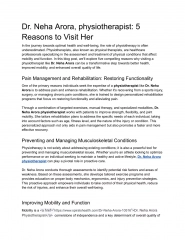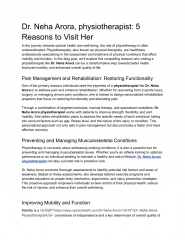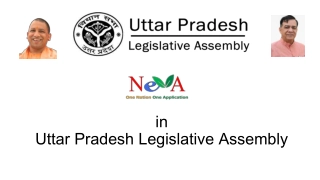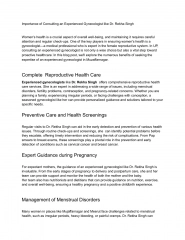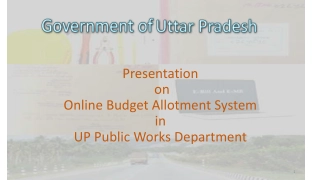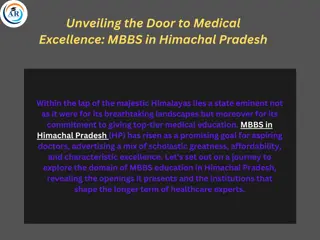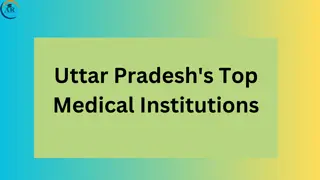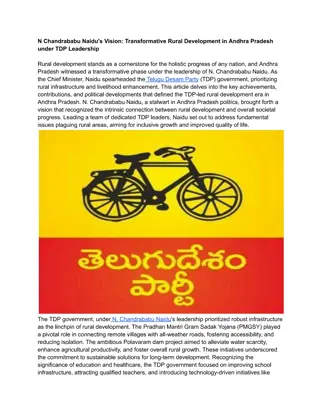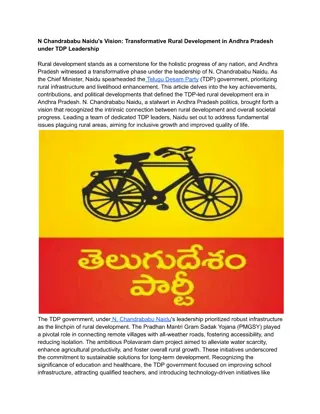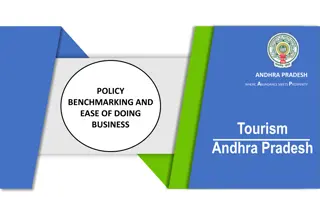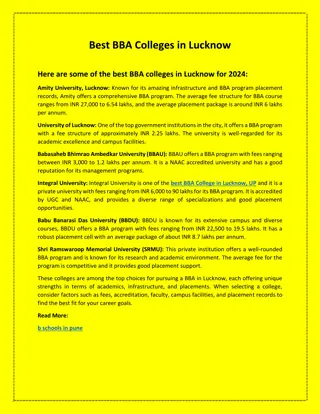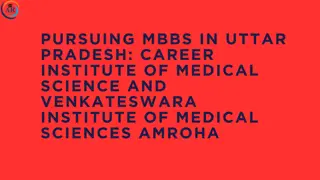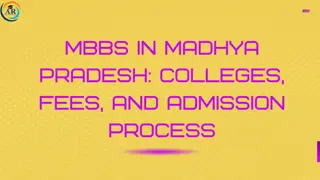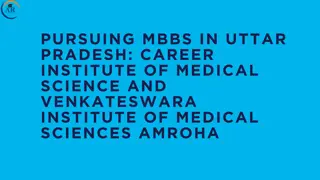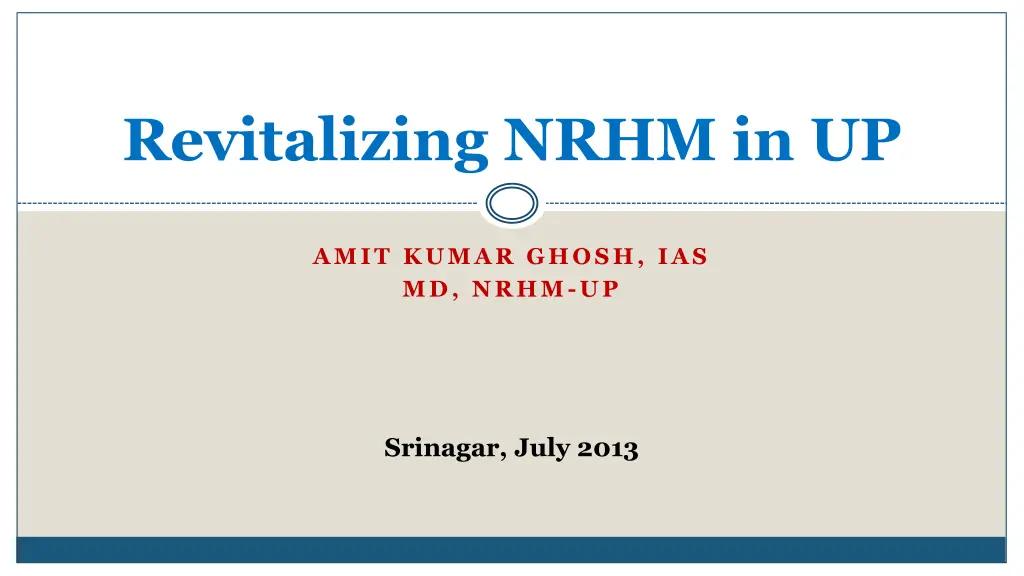
Revitalizing NRHM in Uttar Pradesh: Challenges and Progress
Explore the challenges and concerns faced by the National Rural Health Mission in Uttar Pradesh, including high population, low female literacy rates, and shortages in skilled healthcare professionals. Dive into the institutional deliveries data, comparative trends in maternal and infant mortality rates, financial trends, and conditions at the end of phase one. Discover the strategies implemented to address the crisis of confidence and compliance within the healthcare system.
Uploaded on | 3 Views
Download Presentation

Please find below an Image/Link to download the presentation.
The content on the website is provided AS IS for your information and personal use only. It may not be sold, licensed, or shared on other websites without obtaining consent from the author. If you encounter any issues during the download, it is possible that the publisher has removed the file from their server.
You are allowed to download the files provided on this website for personal or commercial use, subject to the condition that they are used lawfully. All files are the property of their respective owners.
The content on the website is provided AS IS for your information and personal use only. It may not be sold, licensed, or shared on other websites without obtaining consent from the author.
E N D
Presentation Transcript
Revitalizing NRHM in UP AMIT KUMAR GHOSH, IAS MD, NRHM-UP Srinagar, July 2013
Challenges and Concerns in NRHM-UP High Population Low Female Literacy rate 18 Divisions and 75 Districts (requires huge techno-managerial on-going competence) ANM is working on an average 8000 Population (IPHS for Popn of 5000 one ANM) Shortage of Human Resource (highly skilled Gynecologist & Pediatricians) Sub optimal functioning of NBCC & Delivery points Insufficient Functional FRU 162/820 (19%) Insufficient SNCU 7/75 (9%) Early initiation of Breast feeding 33 % ( AHS2011) Exclusive Breast Feeding 17-7% (AHS2011) 20 Crore (5th Largest country in terms of Popn) 59 %
Institutional Deliveries Big Jumps from a Small Base
Comparative Trends in MMR 775 India UP 707 675 575 517 475 440 408 375 359 345 301 275 254 212 200 175 75 1997-002001-032004-062007-092010-12
Comparative Trends in IMR 80 73 PER 1000 Live Birth 71 69 67 70 63 61 58 57 57 60 55 53 50 47 50 44 UTTAR PRADESH 40 INDIA 30 20 2005 2006 2007 2008 2009 2010 2011 SRS Data
Financial Trends 9000 8000 7000 6000 5000 Budget Ependiture 4000 3000 2000 (in Crores) 1000 0 2007-08 2008-09 2009-10 2010-11 2011-12 2012-13
Conditions at the End of Phase 1 CAG CBI
Conditions at the End of Phase 1 Crisis of Confidence CBI CAG
Strategy 3 Cs Crisis of Confidence Compliance CBI
Strategy 3 Cs Crisis of Confidence Compliance Control
Strategy 3 Cs Communication Compliance Control
Strategy Compliance Strategy Compliance Objective Systems restoration and/or systems strengthening Output Compliance with - GoI conditionalities - CAG observations - Implementation framework - Financial guidelines Processes/Activities 1. SHM and GB meetings being held 2. Audits and financial compliance 3. SPMU and DPMU augmentation
Strategy Control Strategy Control Objective Reinstate a system of monitoring, accountability and action against poor performance Outputs 1. Organizational controls Defining roles and responsibilities; systems of transparency and accountability, including 2. Social controls Capacity building of VH&SC, RKS and PRI committees; community-based monitoring Process/Activities 1. Supportive supervision system operationalized field visits in 10 districts per month 2. Facility-wise reviews in DHS based on HMIS & MCTS data 3. Community-based monitoring
Strategy Communication Strategy Objective Outputs Processes/Activities Communication 1. Internal communication coordination with stakeholders and health functionaries at national, state, district and field level 2. External communication Information, education and communication; 1. Clear understanding of programme activities, roles and outcomes among functionaries and stakeholders at all levels. 2. Awareness and demand generation in the community 1. Regular meetings, conferences and reviews with DGs, SPOs, SPMU GMs 2. Regional workshops 3. A brand-focused RMNCH+A campaign to be launched 4. CUGs to be given to all ANMs, ASHAs and MOICs
Focal Areas Continuum of Care Intensification of delivery of the JSY and JSSK schemes A brand-focused state-wide RMNCH+A BCC campaign to be launched Introduction of 102 ambulance service Enforcing MCTS and linking it to ASHA payments
Focal Areas Newborn Care 2013-14 is the Year of Intensification of Newborn Care Activity/ Meaurable Outputs Current Status Planning up to 2017 Target 2012-13 SNCUs 27 23 75 New Born care Corners 830 810 3500 Stabilization units in FRUs 165 125 300 Nutrition Rehabilitation Centres 26 24 75 Labour room upgradation Equipment, training and standards
Focal Areas Community-Based Monitoring Chalo Gaon ki Oar Education and awareness promotion: Community awareness on health entitlements Training of VHSNC and RKS Display of Citizen s charter and service guarantees Monitoring and information sharing: Collection of information and sharing of report cards, community experiences of health services, progress against village health plans Active multi stakeholder Monitoring and Planning Committees at PHC, Block and District levels Public dialogue: Periodic public dialogue (Jan Samvad) - Engagement with providers based on community evidence
Focal Areas Monitoring and Evaluation Regular review meetings and video conferencing with sub-state level authorities and officials, covering entire state Monthly meetings with ADs and Divisional PM Meetings with CMOs, CMSs, ACMOs, DIOs, DPMs, DCMs and DAMs every 2 months 2 video conferences with CMOS, CMSs, Ads, Div. PMs and DPMs every month Quarterly State Review Mission to be conducted on the pattern of Common Review Mission from the year 2013-14 Supportive Supervision: Regular mandatory field visit routines prepared for state, divisional, district and block level officers 10 districts being visited every month In 2011, a web-based beneficiary tracking system was launched to induce sense of transparency in the JSY programme http://www.jsyup.org contains district, block, facility-wise beneficiary details Data of HMIS and MCTS being used for review purposes All reporting from district to state to be web-based by August 2013

